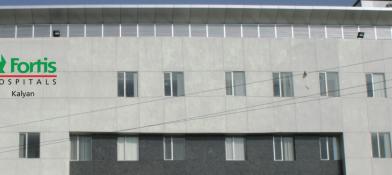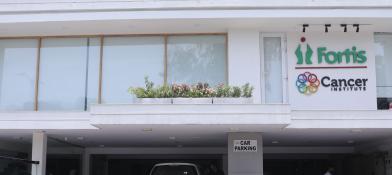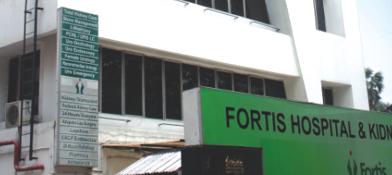BRCA Gene Test for Breast Cancer: A Guide to Genetic Risk and Proactive Health
The BRCA gene test is a specialized medical test that analyzes your DNA to look for specific inherited mutations in two genes: BRCA1 which stands for BReast CAncer gene one and BRCA2 which stands for BReast CAncer gene two. In their normal, healthy state, these genes play a crucial protective role in our bodies, acting as tumor suppressors to repair DNA damage and prevent the uncontrolled cell growth that can lead to cancer.
However, when a person inherits a harmful mutation in one of these genes, this protective function is compromised. This inherited mutation does not mean a person will certainly get cancer, but it significantly increases their lifetime risk of developing several types of cancer, most notably breast cancer and ovarian cancer. The test itself is a simple procedure, typically requiring only a blood or saliva sample.
This genetic information is a powerful tool for proactive healthcare. Knowing you carry a BRCA mutation allows you and your medical team to create a personalized and highly vigilant screening and prevention plan. This can include earlier and more frequent cancer screenings, the use of risk-reducing medications, or preventive surgeries to significantly lower the chances of ever developing cancer.
The decision to undergo genetic testing is a deeply personal one, and it is always preceded by comprehensive genetic counselling. This process ensures you fully understand the implications of the test for yourself and your family, empowering you to make informed decisions about your health based on a clear understanding of your individual genetic risk.
The Science: Understanding BRCA Genes and Hereditary Cancer
Our genes are the instruction manual for our bodies, and some of these genes are specifically designed to protect us from cancer. BRCA1 and BRCA2 are two of the most well-known tumor suppressor genes.
The Role of Healthy BRCA Genes
Think of the BRCA genes as your body's DNA repair crew. Every day, the cells in your body divide, and during this process, errors or breaks can occur in the DNA. The proteins produced by healthy BRCA1 and BRCA2 genes are responsible for spotting these errors and repairing them.
By fixing these DNA breaks, the BRCA proteins ensure that cells remain healthy and stable, preventing them from accumulating mutations that could lead to cancerous growth. Everyone has two copies of each BRCA gene, one inherited from each parent. As long as at least one copy is functioning correctly, it can usually provide adequate protection.
What Happens When There is a BRCA Mutation?
A harmful or pathogenic mutation is like a critical typo in the instruction manual for the BRCA gene. When a person inherits one mutated copy of a BRCA gene, every cell in their body starts with one working copy and one non-working copy. While the single working copy can still provide some protection, it leaves the cells vulnerable. If the second, healthy copy becomes damaged or mutated later in life which is a relatively common event as cells age, that cell is left with no functioning BRCA protection at all.
Without the BRCA repair crew, that cell's DNA damage goes unchecked. The cell can then accumulate more mutations, begin to divide uncontrollably, and eventually develop into a tumor. This is why individuals with an inherited BRCA mutation have a much higher lifetime risk of developing cancer. This pattern of inheritance, where a mutation in just one copy of the gene is enough to increase risk, is known as an autosomal dominant inheritance pattern.
The Lifetime Cancer Risks Associated with BRCA Mutations
The risks associated with BRCA mutations are substantially higher than for the general population.
- Breast Cancer: While the average woman has about a 12% lifetime risk of developing breast cancer, for a woman with a BRCA1 mutation, the risk is estimated to be between 55% and 72%. For a BRCA2 mutation, the risk is between 45% and 69%. BRCA mutations also increase the risk of developing breast cancer at a younger age and of developing a second, new breast cancer.
- Ovarian Cancer: The risk for ovarian cancer increases dramatically from about 1.3% in the general population to 39-44% with a BRCA1 mutation and 11-17% with a BRCA2 mutation.
- Male Breast Cancer: The risk for men increases from about 0.1% to 1-8% with a BRCA mutation, particularly BRCA2.
- Prostate Cancer: BRCA2 mutations significantly increase the risk of developing prostate cancer, and it is often a more aggressive form of the disease.
- Pancreatic Cancer: Both genes, especially BRCA2, increase the lifetime risk of pancreatic cancer.
When is BRCA Gene Testing Recommended?
BRCA gene testing is not a routine screening test for everyone. It is recommended for individuals who have a personal or family history that suggests the possibility of a hereditary cancer syndrome. A genetic counsellor will perform a detailed risk assessment, but common criteria for considering testing include:
Personal History of Cancer
- A personal diagnosis of breast cancer at a young age, typically before the age of 45-50.
- A diagnosis of "triple-negative" breast cancer, a specific subtype, at age 60 or younger.
- A personal diagnosis of breast cancer at any age, combined with a close relative who has had breast, ovarian, pancreatic, or prostate cancer.
- A personal diagnosis of ovarian, fallopian tube, or primary peritoneal cancer at any age.
- A personal diagnosis of male breast cancer.
- A personal diagnosis of pancreatic cancer.
- A personal diagnosis of high-grade prostate cancer.
Family History of Cancer
Even if you have not had cancer yourself, testing may be recommended if you have a close blood relative a parent, sibling, or child who meets any of the criteria above. Other strong family history indicators include:
- Multiple relatives on the same side of the family with breast cancer.
- A known BRCA mutation in the family. It is important to test for the specific mutation found in your relative.
- Relatives who have had both breast and ovarian cancer.
- A family history of male breast cancer.
- Ashkenazi Jewish ancestry, as BRCA mutations are more common in this population.
It is crucial to consider the history on both your mother's and your father's side of the family. A history of breast cancer in your paternal relatives is just as significant as in your maternal relatives.
The Genetic Testing Process: A Step-by-Step Guide
The journey of genetic testing is a carefully managed process that begins and ends with expert guidance.
Step 1: Genetic Counselling Pre-Test Session
This is the most critical step before any sample is taken. You will meet with a genetic counsellor or a clinical geneticist. During this session, they will:
- Collect and analyze your detailed personal and family medical history.
- Provide a personalized risk assessment.
- Explain the science of hereditary cancer and the BRCA genes in detail.
- Discuss the potential results of the test Positive, Negative, or a Variant of Uncertain Significance and what each of them means.
- Explain the potential emotional, social, and insurance implications of testing.
- Answer all of your questions to ensure you can provide fully informed consent.
Step 2: The Test Sample Collection
The test itself is very simple. It requires a small sample of your DNA, which is usually collected through either:
- A Blood Draw: A small vial of blood is taken from a vein in your arm.
- A Saliva Sample: You will be asked to spit into a special collection tube.
The sample is then sent to a specialized genetics laboratory for analysis.
Step 3: The Results and Post-Test Counselling
It typically takes several weeks to get the results. You will receive your results during a post-test counselling session. This is another essential meeting where the genetic counsellor will:
- Explain your test result in clear, understandable language.
- Discuss what the result means for your personal cancer risks.
- Provide a detailed, personalized medical management plan based on your result.
- Discuss the implications for your family members and how to share this information.
- Provide emotional support and resources.
Understanding Your BRCA Test Results
There are three possible outcomes from the test.
- Positive Result: This means a known harmful mutation was found in the BRCA1 or BRCA2 gene. This confirms you have Hereditary Breast and Ovarian Cancer syndrome and are at a significantly increased risk. This result allows you and your doctor to take proactive, life-saving steps.
- Negative Result: This means no known harmful mutation was found. This can be very reassuring, but its interpretation depends on your family history. If a specific BRCA mutation has already been identified in a family member, and you test negative for that same mutation, it is a "true negative." This means you have not inherited the family's high-risk gene and your cancer risk is the same as the general population. If there is no known mutation in your family, a negative result is considered "uninformative," meaning it lowers the likelihood but does not completely rule out a hereditary risk, as there may be a mutation in another gene.
- Variant of Uncertain Significance VUS: This result means that a variation was found in your BRCA gene, but it is not yet known whether that specific variation actually increases cancer risk or if it is just a harmless, normal human genetic difference. A VUS can be frustrating, but in most cases, these variants are eventually reclassified as benign. Your medical management will typically be based on your personal and family history until more information about the variant is known.
Medical Management for BRCA Mutation Carriers
A positive result is not a diagnosis of cancer; it is an opportunity for prevention. The management plan for a BRCA carrier is proactive and multifaceted.
1. Enhanced Surveillance
The goal is to catch any potential cancer at its earliest, most treatable stage.
Breast Surveillance: This begins at a much younger age, often starting at age 25. It includes:
- Annual Breast MRI: Magnetic Resonance Imaging is a very sensitive tool for detecting early breast cancers, especially in young women who often have dense breast tissue.
- Annual Mammogram: Often starting at age 30, a mammogram using 3D technology tomosynthesis is alternated with the MRI every six months.
- Clinical Breast Exams: Performed by a specialist every 6 to 12 months.
- Breast Self-Awareness: Being familiar with your own breasts and promptly reporting any changes.
- Ovarian Cancer Surveillance: This is more challenging as there is no proven effective screening test for ovarian cancer. It may include a transvaginal ultrasound and a CA-125 blood test, but their limitations will be discussed with you.
2. Chemoprevention
These are medications that can reduce the risk of developing breast cancer.
- Tamoxifen or Raloxifene: These drugs, known as SERMs, block the effects of estrogen on breast tissue and have been shown to reduce the risk of estrogen-receptor-positive breast cancer in high-risk women.
3. Risk-Reducing Surgeries
These are the most effective measures for preventing cancer in BRCA carriers.
- Risk-Reducing Mastectomy: The surgical removal of as much of the healthy breast tissue as possible can reduce the risk of breast cancer by over 90%. Many women opt for immediate breast reconstruction.
- Risk-Reducing Salpingo-oophorectomy RRSO: The surgical removal of the ovaries and fallopian tubes. This is a very important procedure as it reduces the risk of ovarian cancer which is very difficult to detect early by over 80%. It also has the secondary benefit of reducing breast cancer risk by about 50% in premenopausal women by removing the body's main source of estrogen.
Our Specialists
The journey of genetic testing and risk management is a collaborative one, involving a dedicated team of experts.
Dr. Niti Raizada
PRINCIPAL DIRECTOR MEDICAL ONCOLOGY | Fortis BG Road
Dr. Rahul Bhargava
PRINCIPAL DIRECTOR HEMATO-ONCOLOGY | FCI Defence Colony
Dr. Mitu Shrikhande
DIRECTOR HEMATO-ONCOLOGY & BMT | Fortis Vasant Kunj
Patient Stories
"After my mother was diagnosed with breast cancer at 48, her oncologist recommended BRCA testing, and she tested positive. It was a shock for our whole family. My genetic counsellor was incredible, explaining everything with so much empathy. I decided to get tested and found out I had inherited the same BRCA1 mutation. It was scary, but it was also empowering. I chose to have a risk-reducing mastectomy with reconstruction. It was a big decision, but knowing I have reduced my breast cancer risk by over 90% has given me a profound sense of control over my future and my health." - Anjali Kumar, 32, Gurugram
"There is so much breast and ovarian cancer on my father's side of the family. I never thought it mattered for my risk until I went for genetic counselling. Because of my strong paternal history, I was advised to get the BRCA test. The weeks waiting for the results were stressful. When the result came back negative, the relief was immense. My counsellor explained it was a 'true negative' since we knew the mutation in my aunt. It felt like a huge weight had been lifted off my shoulders. It's such important information for me and for my children's future." - Priya Sharma, 38, Delhi
Myths vs Facts
Take the Next Step
Knowledge about your genetic makeup is one of the most powerful tools in modern preventive medicine. The BRCA gene test can provide life-saving information, transforming uncertainty into a clear path of action. If you have a personal or family history that is concerning for hereditary cancer, the most important first step is to seek a consultation with a genetic counsellor.
They can help you navigate this complex information, understand your personal risk, and make an informed decision about whether genetic testing is the right choice for you and your family.
CTA: Book a Genetic Counselling Session / Consult an Oncologist
Frequently Asked Questions
Q1. How is the BRCA gene test performed?
Ans. The test is very simple and requires only a small sample of your blood or saliva. This sample is then sent to a specialized laboratory for DNA analysis.
Q2. Does the test check for all hereditary breast cancer genes?
Ans. A standard BRCA test looks specifically at the BRCA1 and BRCA2 genes. However, it is now common for doctors to order a "multi-gene panel test," which analyzes a broader set of genes that are also known to increase the risk for breast and other cancers.
Q3. How long does it take to get the results?
Ans. The turnaround time for genetic test results is typically between three to six weeks, depending on the specific test and the laboratory.
Q4. Should men get tested for BRCA mutations?
Ans. Yes, men can also carry and pass on BRCA mutations. A man with a BRCA mutation has an increased risk for male breast cancer, prostate cancer, and pancreatic cancer. If there is a strong family history, testing for men is just as important.
Q5. What is genetic counselling and why is it mandatory?
Ans. Genetic counselling is a communication process with a trained healthcare professional who helps you understand and adapt to the medical, psychological, and familial implications of genetic testing. It is mandatory because the results have complex consequences, and it is essential that you make a fully informed decision about testing and understand what your results mean.
Q6. Is the BRCA gene test covered by health insurance?
Ans. In India, coverage for genetic testing is improving but can vary significantly between insurance providers and plans. The test is more likely to be covered if it is deemed medically necessary based on established criteria related to your personal or family history.
Q7. If I test positive, what does this mean for my children?
Ans. If you have a BRCA mutation, each of your children has a 50% chance of inheriting that same mutation. Genetic counselling will help you understand how and when to discuss this with your family members.
Q8. What is the emotional impact of getting a positive result?
Ans. Receiving a positive result can evoke a wide range of emotions, including anxiety, fear, and sadness. However, many people also feel a sense of empowerment, as the knowledge allows them to take control of their health. Access to genetic counsellors and support groups is a vital part of managing the emotional journey.







































